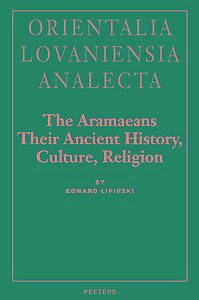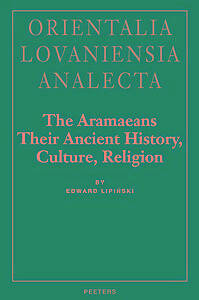
- Afhalen na 1 uur in een winkel met voorraad
- Gratis thuislevering in België vanaf € 30
- Ruim aanbod met 7 miljoen producten
- Afhalen na 1 uur in een winkel met voorraad
- Gratis thuislevering in België vanaf € 30
- Ruim aanbod met 7 miljoen producten
Zoeken
Omschrijving
In order to present the Aramean history during some six hundred years, down to the seventh century B.C., it was necessary to analyze a wide range of sources, mainly cuneiform, epigraphic, and biblical. Chapter I deals with Aramean pre-history and proto-history, while chapter II examines the question of the alleged relationship between the Hebrew forefathers and the ancient Arameans. Chapters III to XIV give a relatively accurate description of the territory of each historically attested Aramean group or state and present a detailed narrative of political events. Chapter XIV, the most extensive, considers the situation of the Arameans in Babylonia, also in relation to the Chaldeans and to the North-Arabian tribes. Chapters XV to XVIII deal with Aramean institutions, economy, legal practices, and religion. Special attention is paid to linguistic features of the available evidence, when they can help resolving historical questions. The book concludes with an extensive general index and with an index of biblical sources.
Specificaties
Betrokkenen
- Auteur(s):
- Uitgeverij:
Inhoud
- Aantal bladzijden:
- 698
- Taal:
- Engels
- Reeks:
- Reeksnummer:
- nr. 100
Eigenschappen
- Productcode (EAN):
- 9789042908598
- Verschijningsdatum:
- 31/12/2000
- Uitvoering:
- Hardcover
- Formaat:
- Genaaid
- Afmetingen:
- 160 mm x 239 mm
- Gewicht:
- 1383 g

Alleen bij Standaard Boekhandel
+ 190 punten op je klantenkaart van Standaard Boekhandel
Beoordelingen
We publiceren alleen reviews die voldoen aan de voorwaarden voor reviews. Bekijk onze voorwaarden voor reviews.











